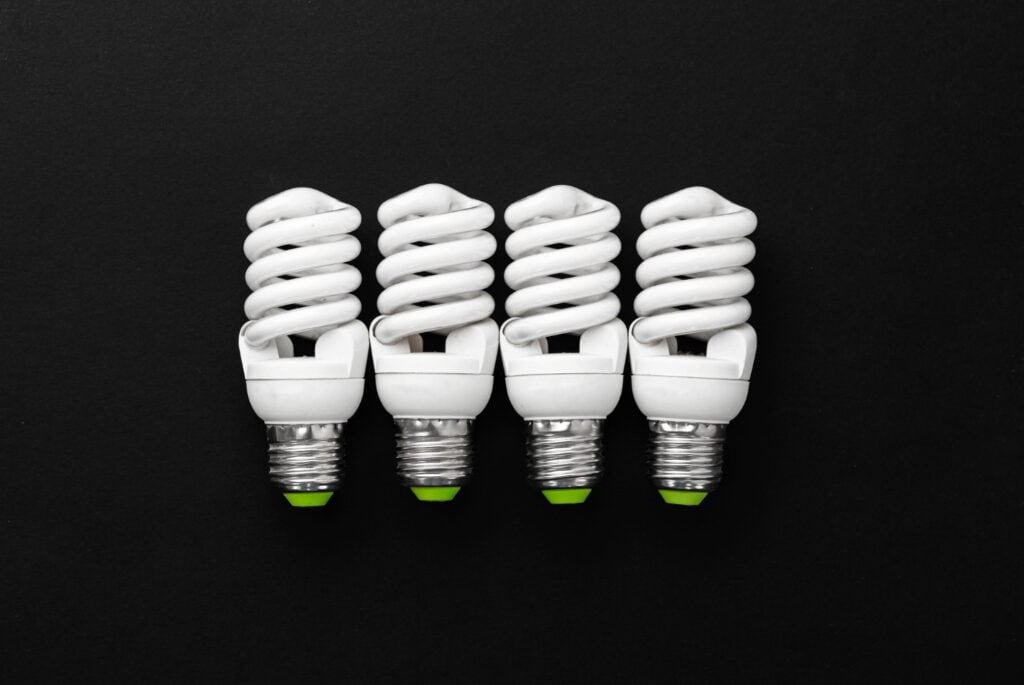Guide to the Benefits of Energy Efficient Light Bulbs
In the modern world, the emphasis on sustainability and conservation of resources has never been more paramount.
Among the myriad of strategies to achieve these goals, the adoption of energy-efficient light bulbs stands out as a beacon of practical and accessible change for households and businesses alike.
This guide delves into the multifaceted benefits of energy efficient light bulbs, shedding light on why they are an essential component of eco-friendly living and operational efficiency.
Understanding Energy Efficiency in Lighting
Energy efficiency in lighting is achieved when lighting technology uses less electrical power to produce the same amount of light compared to traditional lighting options.
Energy efficient light bulbs are at the forefront of this movement, offering a sustainable alternative that not only conserves energy but also reduces utility bills and lowers overall environmental impact.
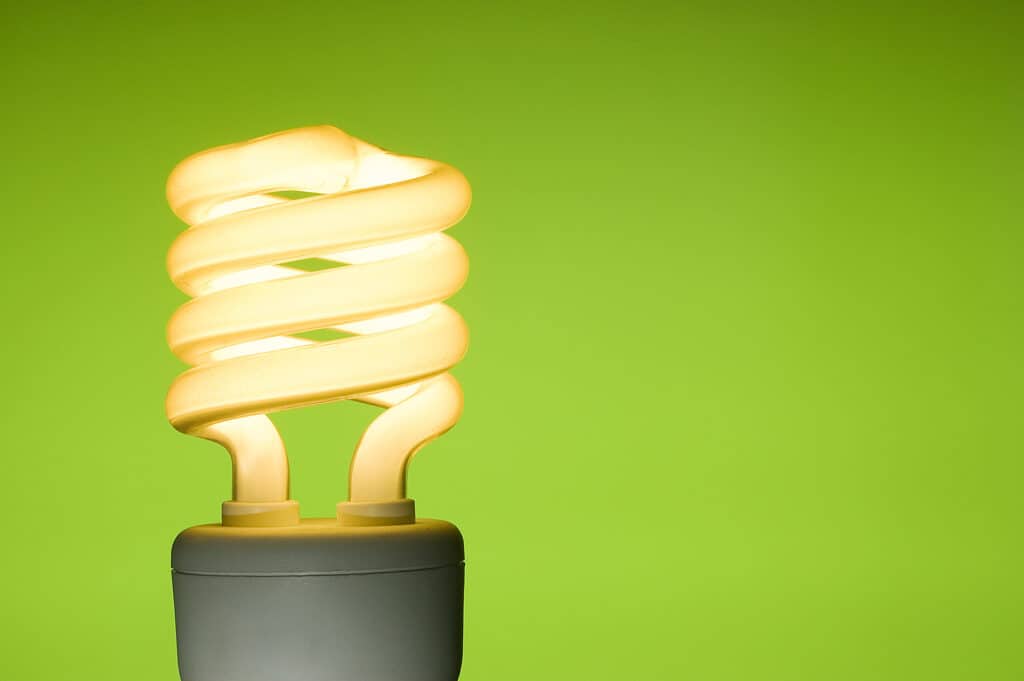
Benefits of Energy Efficient Light Bulbs
The transition to energy-efficient lighting solutions, particularly energy efficient light bulbs, brings with it a plethora of advantages.
These range from direct economic benefits of using energy efficient light bulbs to broader environmental impacts.
Below, we explore these benefits in detail, providing a comprehensive overview of why making the switch is a bright idea.
- Significant Energy Savings: Energy efficient light bulbs significantly reduce energy consumption compared to traditional incandescent bulbs, using up to 80% less energy for the same light output. This not only conserves resources but also results in considerable electricity bill savings.
- Extended Lifespan: These bulbs have a much longer lifespan, with LED options lasting up to 25 times longer than incandescent versions. This reduces the need for frequent replacements, cutting long-term costs and environmental impacts from production and disposal.
- Reduced Carbon Footprint: Lower power consumption by energy efficient light bulbs reduces greenhouse gas emissions from power plants, contributing to efforts against climate change.
- Lower Heat Emission: Energy efficient bulbs produce less heat, making them safer and contributing to lower cooling costs in warmer months.
- Enhanced Lighting Quality: With a range of color temperatures and high color rendering, these bulbs offer superior light quality that can improve mood and productivity, making them suitable for various settings.
- Versatility and Compatibility: Designed to fit various fixtures, energy efficient bulbs come with options like dimmable LEDs and smart technology, providing flexible lighting solutions tailored to user preferences.
- Financial Incentives and Rebates: Adoption of energy-efficient lighting is often encouraged by governments and utility companies through incentives, rebates, or tax credits, enhancing cost-effectiveness.
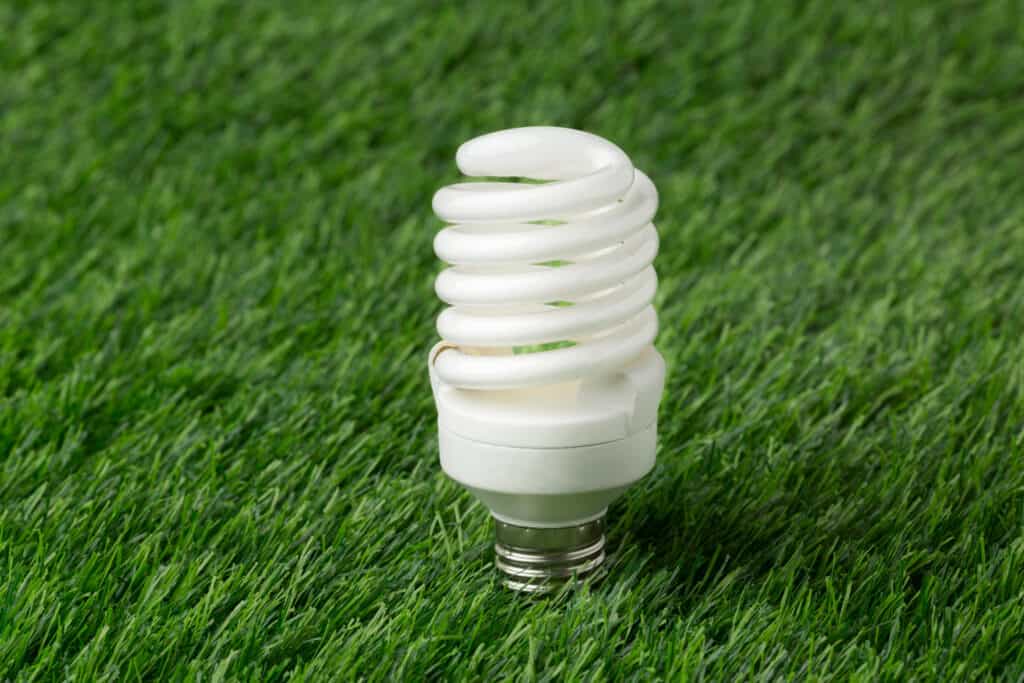
Types of Energy Efficient Light Bulbs
Understanding different types of energy-efficient light bulbs is crucial for making homes and workplaces more efficient.
These bulbs save electricity and help reduce energy consumption and emissions. Below, we explore common types of energy-efficient light bulbs with unique benefits and applications.
LED Bulbs (Light Emitting Diodes)
LED bulbs are highly energy-efficient and durable due to their semiconductor technology.
They consume over 75% less energy and last 25 times longer than incandescent bulbs. Their versatility makes them ideal for various residential and commercial lighting needs.
- Benefits:
- Extremely energy-efficient
- Very long lifespan
- Available in various colors and temperatures
- Instantly turns on to full brightness
- Can be dimmable
CFL Bulbs (Compact Fluorescent Lamps)
CFL bulbs are energy-efficient fluorescent lamps that replace incandescent bulbs. They use a curved tube with argon and mercury vapor to create ultraviolet light, which excites a fluorescent coating to produce visible light.
CFLs use one-third of the energy and last 10 times longer than incandescent bulbs.
- Benefits:
- Lower energy consumption than incandescent bulbs
- Good color rendering
- Longer lifespan than incandescent bulbs
Halogen Incandescents
Halogen incandescents have a capsule inside that holds gas around a filament to increase bulb efficiency. They are more energy-efficient than traditional incandescents because they can operate at higher temperatures.
While they are the least efficient of the energy-efficient lighting options, halogen incandescents are a step up from old incandescent bulbs, offering about 25% energy savings and a longer lifespan.
- Benefits:
- More efficient than traditional incandescent bulbs
- Instant on to full brightness
- Dimmable
- Available in a wide range of shapes and sizes
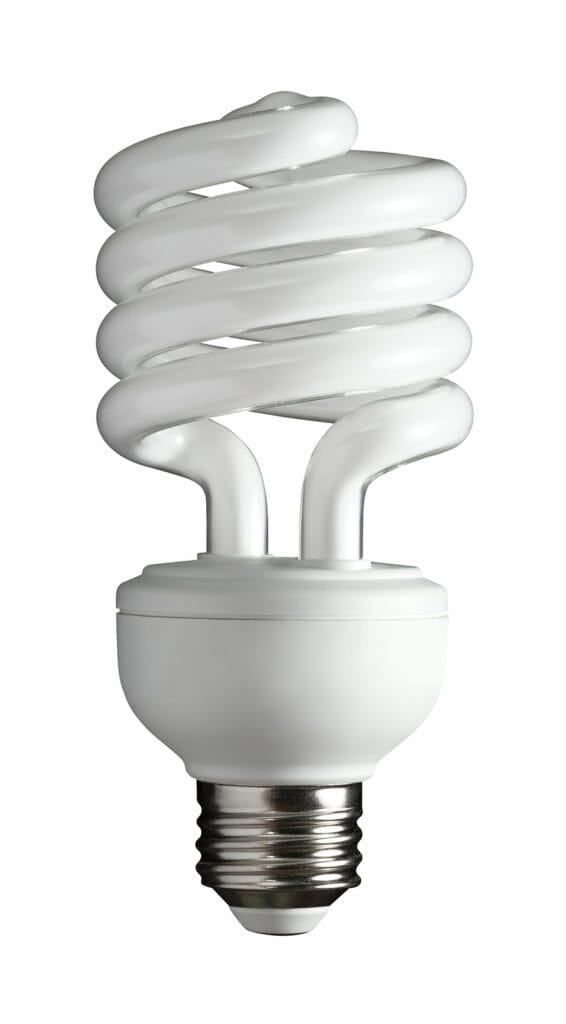
Choosing the Most Advantages of Energy Efficient Light Bulbs
Selecting the most advantages of energy efficient light bulbs for your needs involves understanding several key factors that influence their performance, compatibility, and overall energy savings.
This process goes beyond simply picking out a bulb; it involves making informed decisions based on the bulb's characteristics, the intended application, and environmental considerations. Here's a more detailed look into these factors to help you make the best choice:
- Lumens and Light Output
- Focus on lumens for brightness, not watts. Choose bulbs with adequate lumens for the desired brightness, replacing a 60-watt incandescent with an LED or CFL offering about 800 lumens for similar brightness.
- Color Temperature
- Consider the mood and functionality; use lower Kelvin values (2700K – 3000K) for warm, cozy light suitable for living areas, and higher values (3500K – 5000K) for cooler, energizing light for kitchens, bathrooms, and workspaces.
- Space Requirements
- Match the bulb to the room's function and desired atmosphere, considering whether the space needs task lighting or ambient lighting.
- Fixture Compatibility
- Ensure the bulb physically fits the fixture and is appropriate for its use, including considerations for dimming, outdoor use, or enclosed fixtures.
- Energy Star Certification
- Look for bulbs with Energy Star certification to ensure they meet EPA's efficiency, quality, and performance standards, offering significant energy savings and long-term cost benefits.
- Dimmability
- Check if the energy-efficient bulb is compatible with dimming switches if dimming functionality is needed.
- Instant-On Capability
- Prefer LEDs for immediate illumination if instant lighting is a priority, as some CFLs may have a warm-up period to reach full brightness.
- Smart Features
- Consider bulbs with smart features for home automation, including remote control via apps, integration with home systems, and customizable settings.
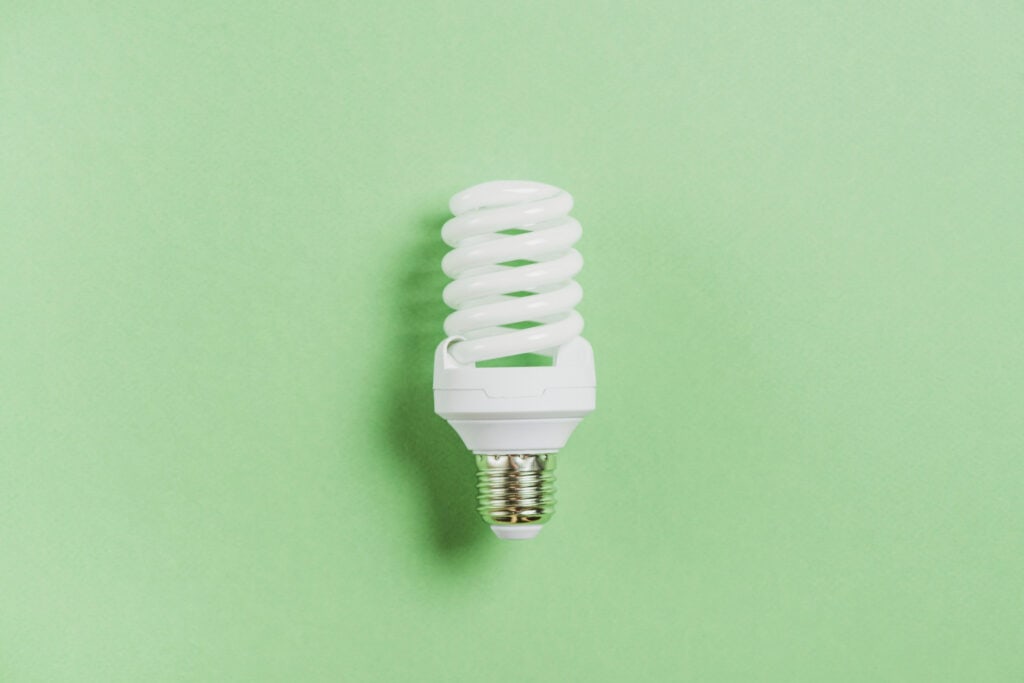
Tips for Maximizing the Benefits of Energy Efficient Light Bulbs
To fully harness the benefits of energy efficient light bulbs, it's crucial to not only choose the right bulbs but also to use them effectively.
Here are some practical tips to help you maximize energy savings, extend the lifespan of your bulbs, and enhance the lighting quality in your home or workplace.
- Assess Your Lighting Needs: Evaluate the lighting requirements of each space, considering factors such as room size, wall color, natural light availability, and activities performed.
- Opt for LEDs Where Possible: Prefer LED bulbs for their superior energy efficiency and longevity, using up to 90% less energy and lasting up to 25 times longer than incandescent bulbs.
- Utilize Task Lighting: Employ task lighting to focus light where it's most needed for specific activities, reducing the necessity to light up the entire room.
- Take Advantage of Natural Light: Maximize the use of sunlight to lessen the reliance on artificial lighting, arranging spaces to enhance the entry of natural light.
- Use Lighting Controls: Implement dimmers, timers, and motion sensors to adjust lighting automatically, saving energy by ensuring lights are only on when necessary.
- Properly Maintain Your Light Bulbs: Clean bulbs and fixtures regularly to maintain efficiency and light output, as accumulated dust can reduce brightness.
- Dispose of Bulbs Responsibly: Follow local guidelines for recycling or safe disposal of energy efficient bulbs, especially those containing hazardous materials like CFLs.
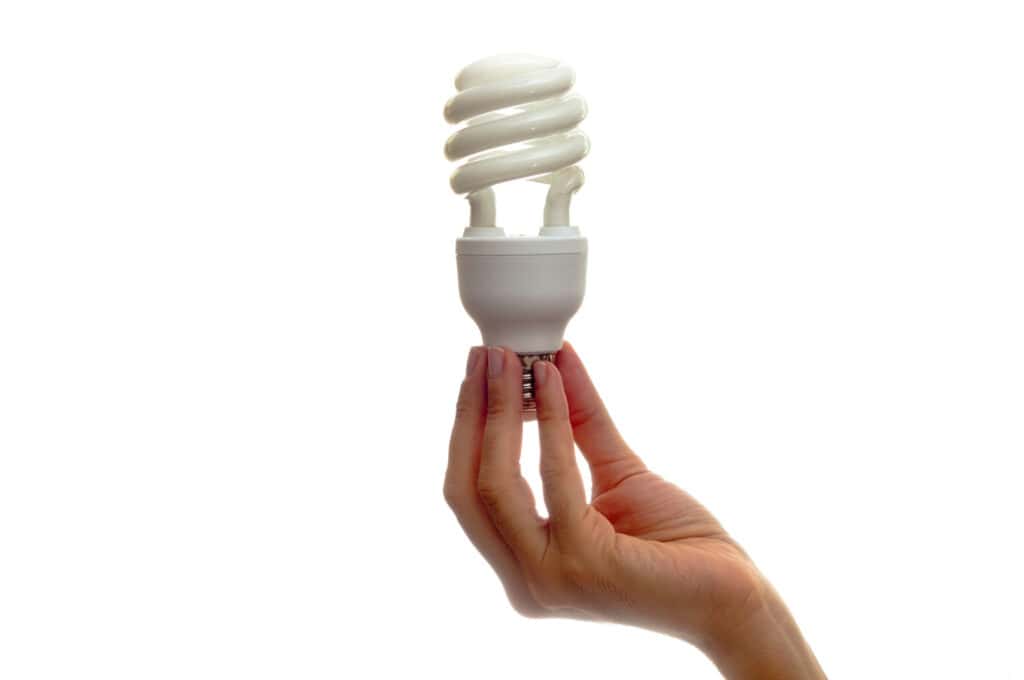
FAQs on Energy Efficient Light Bulbs
What Are Energy Efficient Light Bulbs?
Energy efficient light bulbs are designed to provide the same amount of light as traditional bulbs while using less energy. They include LED (Light Emitting Diodes), CFL (Compact Fluorescent Lamps), and Halogen incandescent bulbs.
Why Should I Switch to Energy Efficient Light Bulbs?
Switching to energy efficient light bulbs can lead to significant energy savings, reduced electricity bills, longer bulb lifespans, decreased environmental impact, and improved lighting quality.
Can Energy Efficient Bulbs Be Used with Existing Light Fixtures?
Yes, most energy efficient light bulbs are designed to fit existing fixtures. LED bulbs, in particular, are available in various shapes and bases to match standard fixtures.
Are Energy Efficient Light Bulbs More Expensive?
While the initial purchase price of energy efficient light bulbs may be higher than traditional bulbs, their longer lifespan and lower energy consumption result in lower overall costs over time.
How Do I Dispose of Energy Efficient Light Bulbs?
Energy efficient bulbs, especially CFLs, should be disposed of properly due to the small amount of hazardous materials they contain. Many retailers and local waste management services offer recycling or safe disposal options.
Do Energy Efficient Bulbs Really Save Money?
Yes, energy efficient bulbs can significantly reduce your energy bills. For example, replacing a traditional incandescent bulb with an LED can save over $80 in electricity costs over the bulb's lifetime.
How Long Do Energy Efficient Light Bulbs Last?
The lifespan of energy efficient bulbs varies by type: LED bulbs can last up to 25,000 hours or more, CFLs around 10,000 hours, and Halogen incandescents about 1,000 hours.
Is the Light Quality from Energy Efficient Bulbs as Good as Incandescent Bulbs?
Energy efficient bulbs have improved significantly in quality and now offer a range of color temperatures and high color rendering indexes, making them comparable or superior to incandescent bulbs in terms of light quality.
Can I Use Energy Efficient Bulbs in Dimmer Switches?
Many energy efficient bulbs, particularly LEDs, are compatible with dimmer switches. However, it's important to check the bulb's packaging or product information to ensure compatibility.
Are There Any Incentives for Switching to Energy Efficient Lighting?
Many governments and utility companies offer rebates, incentives, or tax credits for purchasing and using energy efficient lighting. Check with local programs for available offers.
Can Energy Efficient Light Bulbs Be Used Outdoors?
Yes, many energy efficient bulbs are suitable for outdoor use. LED bulbs, in particular, perform well in cold temperatures, making them an excellent choice for exterior lighting.
Energy Efficient Light Bulbs Benefits Conclusion
The benefits of energy efficient light bulbs are clear and compelling. From substantial energy and cost savings to environmental sustainability and improved quality of life, these innovative lighting solutions are an indispensable part of a greener, more sustainable future.
As technology continues to advance, the potential for energy efficient light bulbs benefits to revolutionize our approach to lighting and energy consumption grows ever greater, illuminating the path towards a brighter, more sustainable world.

